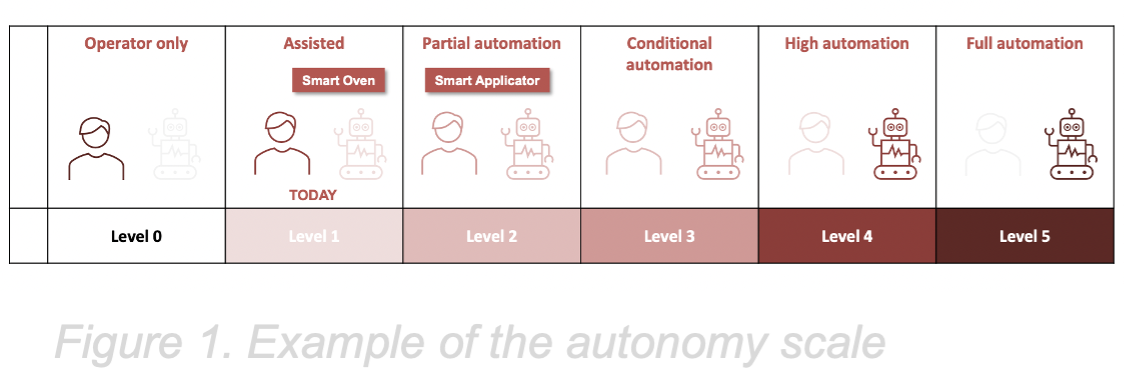Profit and planet: lowering energy consumption with AI
Running a sustainable business with concrete carbon-neutral targets is an important ambition. And smart solutions leveraging connectivity, data analytics, artificial intelligence, paired with domain knowledge, play a vital role in making this ambition a reality.
AMF, a world-leading bakery system solution provider, recognizes the challenges of modern bakeries: traditional focus on consistent product quality, efficient production processes, and bottom-line costs remain; at the same time new topics like sustainability and reducing food waste become more important each day. AMF has joined forces with Itility and together we’ve devised an ambitious plan: harnessing the power of data and technology to enable bakeries to achieve both operational and environmental excellence. We set out to develop a full range of intelligent products that will transform a bakery’s operating model and accelerate positive change.
For us, an intelligent product automates decision-making processes. In the case of AMF, that would translate to the ambition of running a bakery fully hands-off and lights-out. However, that ambition can only be reached one step, one level at a time.

See it as the autonomy scale: it ranges from Level 0 as “operator only” and then raised at each level until topping out at Level 5 as “full automation”.
Each step toward a higher level makes a solution smarter and brings a bakery closer to becoming “lights-out”. One of the use cases at AMF toward this is the Sustainable Oven Service. This service uses building blocks of our AI-Factory to produce recommendations to be more energy-efficient in the baking process.
First, experts’ domain knowledge is represented as a vast collection of rules in the Rule Engine, which is one of the AI-Factory’s building blocks. These rules make up the models, which aim to come as close as possible to a human expert in making recommendations. Once a recommendation is made, the Retraining Engine, one of the other building blocks, enables the operator to validate it by allowing him to accept or reject the recommendation with a simple click. This feedback is then sent back into the Retraining Engine to retrain the models and improve future recommendations. The more operators use the solution, the more labeled data is collected, and the better the recommendations become. The feedback loop allows for continuous learning and improvement of the machine while enabling a smooth, step-by-step transition toward fully automated operations. The better the algorithms get, the more hands-off operators become.
A hybrid model: unlock new realms of knowledge
While some knowledge in the baking process needs to be captured, other knowledge needs to be first unmasked. Take, for instance, how to reduce gas consumption and CO2 emissions without compromising quality.
Traditionally, the baking industry has relied on empirical and theoretical models to study oven behavior in its ideal state (the physics-based model). We enhanced this with real-time data and self-learning algorithms to mirror the current state of the oven (the data-driven model). We believe a hybrid approach taking the best of both worlds – a good fundamental structure proposed by the physics-based model enriched and enhanced by a vast trove of real-time data provided by the data-driven model – will achieve the most accurate representation of reality and yield the best results when navigating new knowledge.
This hybrid model – or digital twin – integrates real-time sensor data, physics-based models, and oven experts’ domain knowledge to optimize energy consumption. The recommendations of the model help reduce gas usage by 10-20% and hence, drive a more sustainable baking process.
The first step is doing so in an “operator-assisted” manner: a dashboard shows the operator a recommendation that can either be accepted or not. The recommendation is then executed manually by the operator by changing settings via the HMI, and the model gets feedback that the recommendation was a good one. The more trust the operator gets in the recommendations, the more hands-off those recommendations can be implemented. The next step would be to automatically execute the recommendation upon acceptance. The final step would be to remove the manual acceptance and have the machine decide which recommendations to execute.
A hands-off, lights-out process of baking buns with considerably lower energy consumption.
Find out more about the Sustainable Oven Service in the video below:






